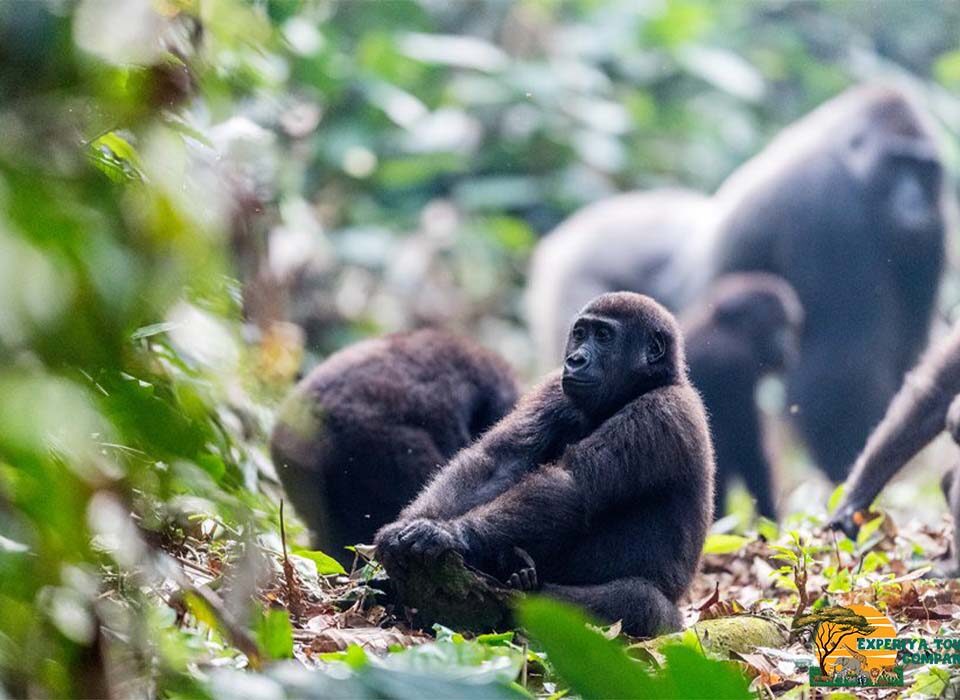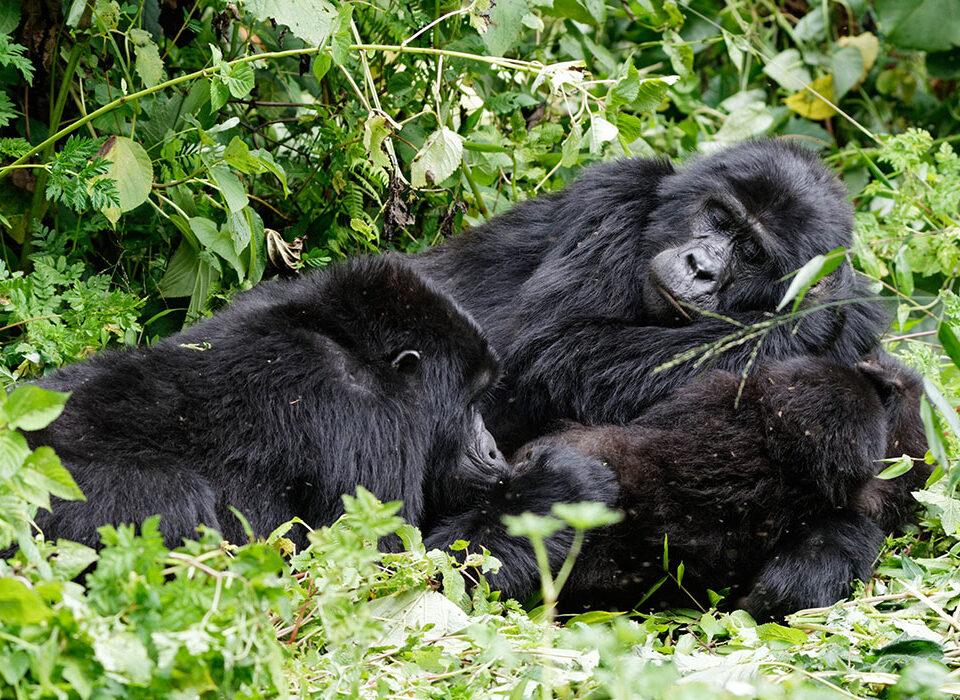
How Many Gorilla Families are Volcanoes National Park?
June 20, 2025
Are There Areas to Avoid in Rwanda?
June 20, 2025Can I touch the Gorillas During a Gorilla Trek?

Can I Touch the Gorillas During a Gorilla Trek?
There are few moments in life as humbling and soul-stirring as standing face-to-face with a mountain gorilla in the wild. Deep in the misty forests of East Africa, where sunlight streams through ancient trees and the air is filled with the whispers of the jungle, gorilla trekking feels like stepping into a sacred realm. It’s an encounter that moves you profoundly. Every breath, every heartbeat, every slow movement feels like a silent conversation with one of our closest relatives on Earth. But as that gorilla gazes back at you with intelligent, gentle eyes, a question quietly arises in many hearts: Can I touch the gorillas?
The Dream of Closeness
For most travelers who come to Uganda’s Bwindi Impenetrable Forest, Rwanda’s Volcanoes National Park, or Congo’s Virunga National Park, the idea of a gorilla trek is not just about seeing the gorillas. It’s about feeling a connection. These magnificent creatures majestic silverbacks, curious juveniles, and nurturing mothers share over 98% of our DNA. They remind us of our own humanity in their gestures, their expressions, and their family bonds. So, it’s only natural to want to get closer to reach out and touch them. But in truth, gorilla trekking is not a zoo-like experience. It is a deeply protected and respectful wildlife encounter.
Why You Should Not Touch Gorillas
The short answer is no you cannot and should not touch the gorillas during a gorilla trek. This is not just a matter of park rules; it is a matter of conservation, health, and respect.
1. Gorillas Are Wild Animals
Despite being habituated to human presence, mountain gorillas are still wild. They live freely in their natural habitat and behave as they would without human interference. Touching a gorilla can provoke unpredictable reactions. Even the calmest gorilla may become startled or defensive, especially if they sense any form of threat. Respecting their space allows them to maintain their natural behaviors and reduces stress on the animals.
2. Risk of Disease Transmission
Humans and gorillas share close genetic similarities, and with that comes a shared vulnerability to diseases. Gorillas can catch flu, colds, and other respiratory illnesses from humans illnesses that can be fatal for them due to lack of immunity. This is why visitors are required to stay at least 7 meters (23 feet) away from the gorillas during treks. Even if a gorilla approaches you out of curiosity, it’s crucial to stay still and avoid any physical contact. The safety of these endangered species depends on your discipline and restraint.
3. Conservation Ethics and Guidelines
Every gorilla permit issued by Uganda Wildlife Authority, Rwanda Development Board, or the Congolese authorities comes with strict guidelines. Among them is the golden rule no touching the gorillas. These rules are not designed to limit your experience, but to protect both the gorillas and future travelers ability to enjoy similar encounters. Rangers and guides are trained to enforce these guidelines with patience and care, ensuring the survival of these fragile populations.
What Happens If a Gorilla Touches You?
Interestingly, while you are not allowed to initiate contact, gorillas themselves sometimes break the rules. Especially in families that are used to human presence, curious juveniles may occasionally approach a visitor. It’s a heart-pounding moment when a young gorilla brushes against your leg or pulls at your backpack strap. But what should you do? Stay still. Do not touch them back. Avoid eye contact and follow your guide’s instructions calmly. Such moments are rare but unforgettable, and how you respond reflects your respect for the experience.
The Power of Proximity
The beauty of gorilla trekking lies in the closeness not physical, but emotional and visual. Watching a silverback beat his chest, seeing a mother cradle her infant, or observing a playful youngster swing from the vines all from a safe distance is intimate in its own way. You’ll have up to an hour with the gorilla family you’re assigned to, and trust me, it will feel like a lifetime. Every second spent watching them in silence becomes a memory engraved in your soul.
Preparing for a Responsible Trek
To make the most of your gorilla trekking experience, preparation is key. Follow the guidance of your trekking ranger, and always remember the following key tips:
-
Stay Healthy: If you are feeling ill, declare it. You may be denied the trek for the gorillas’ safety.
-
Maintain Distance: Always respect the 7-meter rule, even if a gorilla comes closer.
-
No Flash Photography: Use natural light and avoid sudden movements.
-
Stay Calm and Quiet: Sudden movements or loud noises can startle the gorillas.
-
Don’t Eat or Drink Near Gorillas: Food smells may attract them and lead to unwanted interactions.
-
Avoid Strong Perfumes or Scents: These can disturb or confuse the gorillas.
The Greater Purpose: Conservation Through Tourism
By following these guidelines, you’re not just protecting the gorillas. You’re actively participating in a model of sustainable tourism that funds conservation. Every gorilla permit contributes to anti-poaching patrols, community development, and forest preservation. Touching gorillas, tempting as it might be in the moment, undermines the very efforts you’ve come to support. True love for these animals means keeping them wild, healthy, and safe.
Final Thoughts: The Real Touch Is In Your Heart
In the end, you don’t need to touch a gorilla to feel changed. The magic of gorilla trekking lies in what it touches inside of you. Standing in silence in the heart of a rainforest, watching these gentle giants live their lives, you feel something far deeper than skin contact. You feel a shift a stirring of awareness, humility, and gratitude. It’s a moment that leaves fingerprints not on your hands, but on your heart.
And when you walk back down the forest trails, muddy boots and full spirit, you’ll carry with you more than photos. You’ll carry a promise: to protect, to respect, and to never forget.



